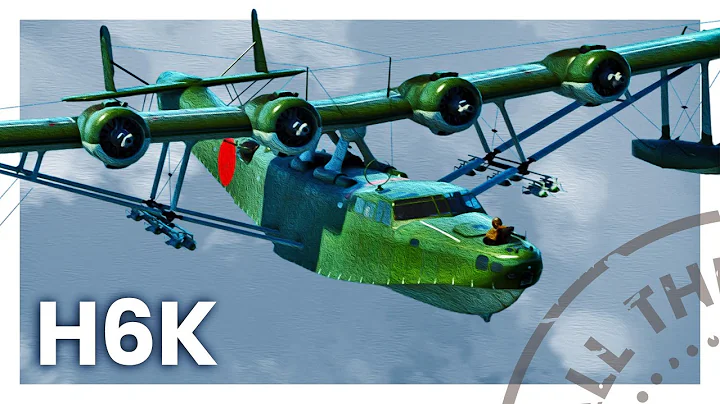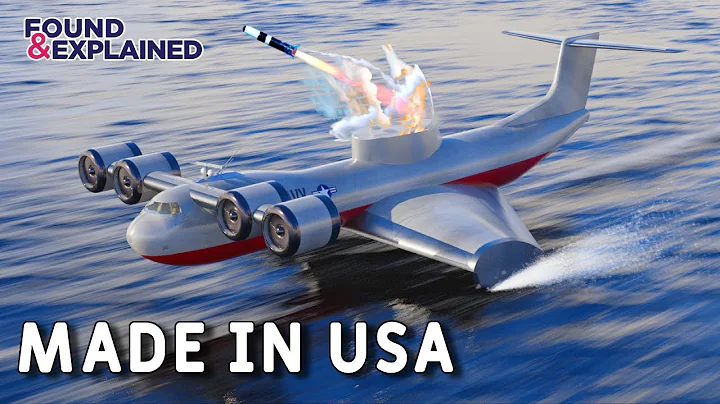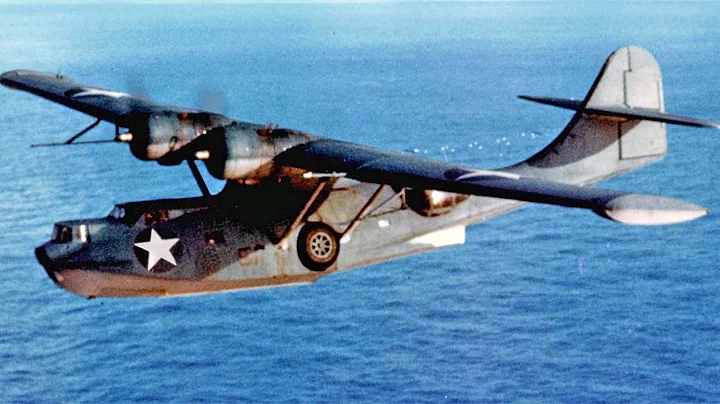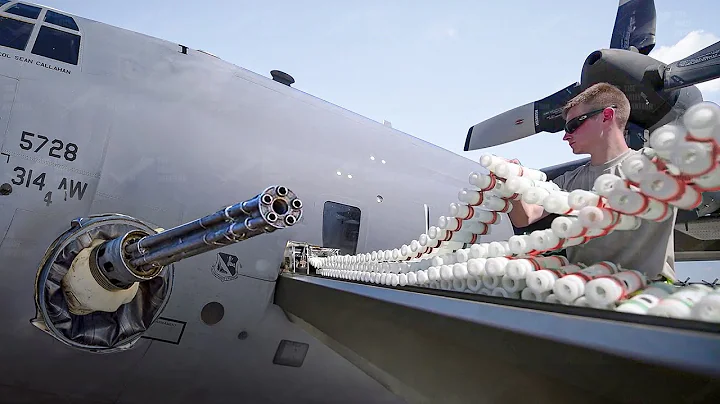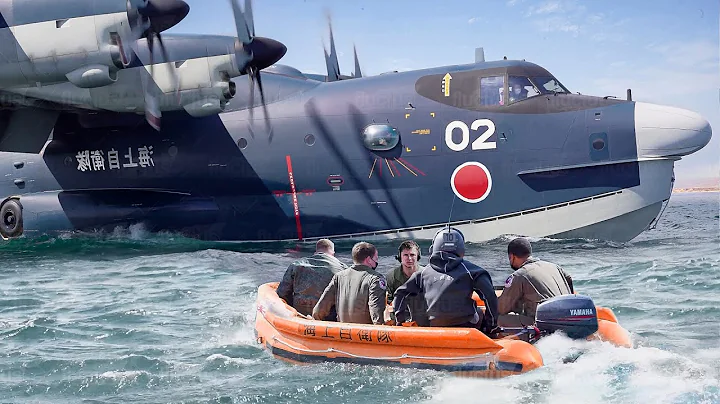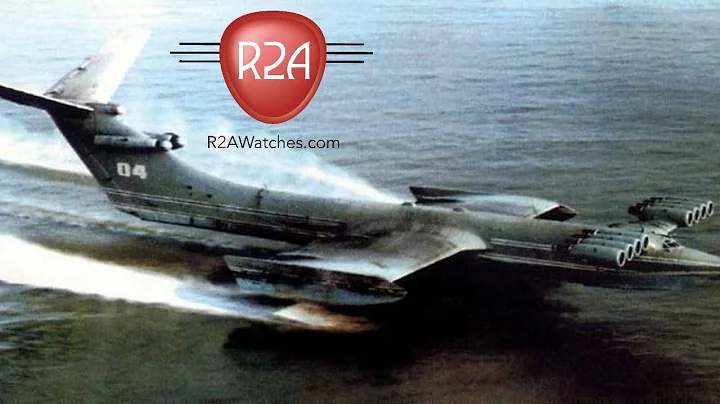It is called "Godzilla in the Sky". It has a maximum load capacity of 460 tons and can accommodate 900 fully armed soldiers. Its load capacity is nearly 10 times that of the largest military seaplane at the time, and its cruising range can reach 18,000 kilometers. However, no one has seen its true face. What kind of mysterious weapon is it? Why didn't it come out in the end? The crazy idea of

came from Japan at the end of and during World War II. At that time, Japan suffered a disastrous defeat in the Battle of Guadalcanal, and all the navy, land and air forces suffered heavy losses. The United States thus cut off Japan's sea lines of communication, causing Japanese soldiers trapped on various islands in the Asia-Pacific region to be unable to obtain supplies.
Japan also tried to deliver supplies to the soldiers stationed on the isolated island through merchant ships, but they were all threatened by Allied forces. The soldiers who were unable to obtain supplies had to fend for themselves on the island. Malaria, hunger, diarrhea and other diseases were rampant among the soldiers stationed on the island, causing a large number of combat casualties.
The failure of this battle caused Japan to completely lose its strategic initiative, and its defeat in World War II was determined. However, Japan did not give up and still hoped to reverse the situation of the war. Therefore, the Japanese government proposed to the then Kawanishi Aircraft Company to develop a super flying boat with a load capacity of 460 tons, larger than an aircraft carrier, and capable of delivering 900 troops and a large amount of war materials to the battlefield at one time.
As Japan's most powerful arms dealer in manufacturing large aircraft at the time, Western Sichuan Aircraft Company believed that the Japanese government's crazy idea was simply a fantasy. After all, the largest seaplane German BV222 at the time had a maximum take-off weight of only 49 tons, and the load capacity required by the Japanese government was nearly 10 times that.
The government order, which Kawanishi Aircraft Company could not refuse, could only name this research project KX3, and use the H8K, Japan's largest seaplane at the time, as the prototype. Based on the original size, the fuselage was enlarged in proportion. The entire shape follows the H8K's distinctive boat-shaped body, and two giant pontoons are installed on both sides of the KX3's wings so that it can take off and land on the water.

Its fuselage length was 162 meters and its wingspan reached 180 meters, which was larger than many Japanese warships currently in service at the time. The wing area exceeded the deck area of an aircraft carrier at the time. The KX3 is so large that it requires nearly 62 crew members to drive it.
KX3's exaggerated load capacity of 460 tons is comparable to the load capacity of the An-124, which was once the world's second largest transport aircraft. However, the propulsion system cannot be compared to the An-124's jet engine. So how can this behemoth get into the sky?
After precise calculations and repeated verification by engineers from West Sichuan Aircraft Company, it was finally concluded that KX3 requires 12 NE201 turboprop engines with a single output of 7,000 horsepower, installed side by side on the wings, to be able to drive this giant aircraft.
These 12 NE201 turboprop engines all came from the famous German aircraft engine manufacturer " BMW ", which is now a famous car brand.

Even so, engineers still felt that it was not enough, so in the subsequent improvement plan, four Japanese Mitsubishi Heavy Industries engines were added as auxiliary power. As a result, KX3 is equipped with a total of 16 engines, with a total power of 132,000 horsepower. The maximum speed is expected to reach 740 kilometers per hour. When fully loaded, the maximum range is 18,000 kilometers.
This flight can go to any corner of the world, not to mention flying to various islands in the Pacific. Looking at it this way, the KX3 is truly a transport aircraft. But such a behemoth is always the focus of attention wherever it goes. How can we make it a "living target"?
The design team of West Sichuan Aircraft Company came up with the idea of adding 19 25mm cannons and one 50mm cannon to the KX3. This combat effectiveness is comparable to that of the modern American "air gunship" attack aircraft. . According to the firepower configuration of the fighter during World War II, it is not an exaggeration to call the KX3 an "air weapons arsenal".

Just when the engineers triumphantly thought that this solution was perfect and KX3 would soon be born, something happened that made this idea come to nothing.
On August 15, 1945, the Emperor of Japan announced to the whole country via radio that he would accept the Potsdam Proclamation and surrender unconditionally. This completely put the development process of KX3 on hold. West Sichuan Aircraft Company has worked hard on research and development for two years, but until this time, it has not developed a prototype. It can be seen that the development difficulty of KX3 is not ordinary.
Although the development of KX3 failed, Japan's design level in seaplanes is still world-renowned. The most famous ones are PS1 and US2. Both aircraft were developed by Japan's Shinmeiwa Industrial Co., Ltd., which was the Sichuan West Aircraft Company at that time.
PS1 seaplane is an anti-submarine patrol seaplane. It was developed in 1966 and first flew on October 5, 1967. Until its retirement in 1990, PS1 delivered a total of 23 production aircraft and 2 prototypes.
Its fuselage is an all-metal semi-monocoque, with a wingspan of 33.15 meters, a wing area of 135.8 square meters, a length of 33.46 meters, a large aspect ratio, a V-shaped belly design, and a single-step water ski bottom. There are water baffles on both sides of the nose. The fuselage is divided into upper and lower layers by a partition. There are wave suppression grooves behind the propeller lines on both sides of the lower part.

KX3 has a maximum takeoff weight of 43,000 kilograms, a maximum level flight speed of 547 kilometers per hour, and a maximum range of 2,168 kilometers. It uses four General Electric Company turboprop engines, with a single output power of 3,060 horsepower. When
is parked on the water, it uses stable pontoons fixed on the hull and near the wing tips. When landing on land, it uses the retractable front three-point landing gear .
In order to reduce landing and take-off speeds as much as possible, PS1 is equipped with a boundary layer control system and large flaps, making full use of the propeller slipstream effect. It also uses blown-out rudders, flaps and elevators, as well as an automatic flight control system to ensure maneuverability and stability during low-speed flight.
It was precisely because of its low speed and short battery life that the Japanese Navy had no choice but to replace them all with US1A in the 1990s.

Although it can successfully launch under the conditions of wave height of 3 meters and wind speed of 25 meters per second, and its maximum range exceeds 3,000 kilometers, it still cannot meet the needs of the Japan Maritime Self-Defense Force . As a result, Japan's Shinmeiwa comprehensively upgraded US1A, which became US2.
The biggest difference between it and US1 is the maneuverability of entering and leaving the water, as well as the onboard equipment. US2 is equipped with a wire-by-wire control system, a comprehensive instrument panel and a pressurized cockpit. The engine is replaced by an AE2100, and the propeller is changed from 3 blades to 6 blades, which reduces the weight of the main wing, wave absorber and pontoon. The overall performance of
has made a qualitative leap. The flight altitude is twice that of US1, up to 6100 meters, the flight speed is increased to 555 kilometers per hour, the maximum range is increased to 4600 kilometers, and the hydroplaning take-off distance is reduced from 735 meters to 460 meters. It has been shortened by 38%, and the shortest distance for water landing is reduced to 220 meters.

Compared with similar seaplanes from other countries, US2 is still very good in this aspect. For example, Canada's "Bombardier" CL415 has a take-off distance of 814 meters and a landing distance of 665 meters; Russia's "Beriev " Be200 has a take-off distance of 1,400 meters and a landing distance of 800 meters.
It is also equipped with a pressure cabin system and is the world's first large seaplane equipped with a pressurization device. It can increase the flight altitude of US2 to more than 9,000 meters. At the same time, US2 also uses a glass cockpit to improve the reliability of maritime search and rescue. It uses satellite communication systems, global positioning system , target search radar and forward-looking infrared night vision devices, as well as Thomson's "Sea Overlord" "Radar allows US2 to perform missions in bad weather.

Due to the superior performance of the US2, the Indian government intends to import this type of seaplane to Japan after a joint training. But there is still no substantial progress.
Although Japan has rich experience and fruitful results in the development of seaplanes, the world's earliest seaplanes were not made by Japan.
On March 28, 1910, the world's first seaplane that could take off, land, and park on the water, the "Fabre Waterplane", successfully made a test flight in France. This marked the birth of the world's first pontoon-type seaplane. Later, the aircraft was collected by the French Air and Space Museum.

Its name comes from the inventor Fabre. Fabre, who comes from a shipbuilding family, has been interested in engineering since he was a child. Not only did he inherit his father's skills, he also wanted to develop an aircraft that could take off and land on the water.
Just do it. While studying at the Jesus College in Marseille, Fabre began to study the design of aircraft and propellers, and also applied for a number of patents for flotation devices. Finally in 1909, he developed the world's first seaplane, but the test flight was not successful.
At the end of the same year, Fabre designed a second seaplane, and the following year, he successfully tested it himself, so he personally named the plane "Fabre".

The world's first hull-type seaplane also came from France. It was designed and manufactured by the aviator Deno, and was named "Jacques Donet" in order to thank Donet for his funding. The aircraft was developed from 1911 until its successful test flight on April 13, 1912.
The so-called hull-type seaplane is designed to look like a boat. Therefore, it does not need to install additional pontoons, so that the aircraft can float on the water like a ship. However, in order to maintain stability on the water, hull-type aircraft will still install small auxiliary buoys under the wings on both sides. Therefore, it is also called a "ship".
In order to allow the aircraft to generate upward hydrodynamic lift, Deno The front section of the fuselage is designed into a triangle, and a slope is also designed under the fuselage to lift it higher above the water.

This aircraft uses the Neom Omega 7-cylinder radial aeroengine produced in France, with 50 horsepower, a wingspan of 10.86 meters, a fuselage length of 8.4 meters, a weight of 650 kilograms, and a top speed of 97 kilometers per hour. Two seats for one passenger. During
's first test flight, Deno failed to master the flying height, causing the plane to plunge into the water and flip over. Learning from his first experience, Denaud changed the cross-section of the "Jacques Donet" to a rectangular one. Later, Deno took "Jacques Donnet" to the bank of the Seine River for test flights, and it was successful seven or eight times.

Type A No. 1
my country's first seaplane was the Type A No. 1, which was successfully developed in August 1919 by Bayama , Wang Zhu and others.
But the British ridiculed it as "like a big toy, which can only be watched by people, and will never fly into the sky!" In order to prove our strength, Dr. Sun Yat-sen's military attache and the then Director of the Aviation Bureau Yang Xianyi personally tried to fly it.
On August 9, 1919, amidst the roar of the engine and the propeller turning rapidly, the "Type A" slid close to the water for a certain distance and then rose into the air, effectively responding to the cynicism of the British.

Kunlong 600
Today, our country has also independently developed an amphibious aircraft such as the Kunlong 600, which has filled the gap in this type of aircraft in our country. It broke the Western technology monopoly and became one of the few countries that can independently develop the amphibious aircraft .
It is one of the Three Musketeers of my country's large aircraft. It is the world's largest amphibious aircraft under development. On October 20, 2018, it successfully achieved its first water take-off and landing at Jingmen Zhanghe Airport in Hubei.
The performance of the Kunlong 600 is very excellent, with a maximum range of 4,500 kilometers and a rescue radius of up to 1,600 kilometers. It can cover most of my country's sea areas and exclusive economic zones. The maximum cruising speed is 500 kilometers per hour, and the maximum number of passengers can reach 50, which is higher than that of Japan. US2 has 30 more people.
Although the seaplane was invented to serve the war, it was later used for emergency rescue and disaster relief and maritime rescue activities, which can be regarded as benefiting mankind.


